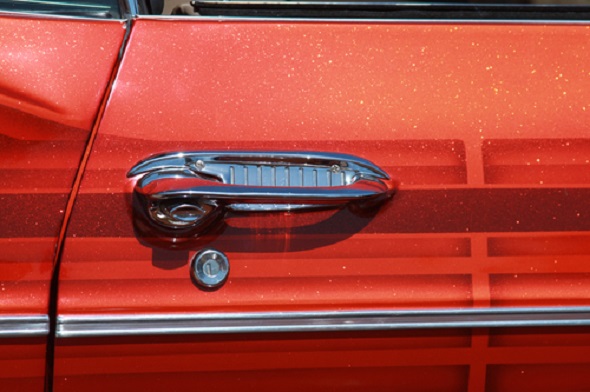High Maintenance: Where Have All the Classic Car Mechanics Gone?

By: Jacquelyn Connelly
One of the star cars at the 2018 Monterey Classic Car Auction will be a 1955 Ferrari 500 Mondial that has been owned by the same collector for 58 years.
According to Paul Morrissette, senior vice president at Chubb, it’s one of the best-documented racecars to ever cross the auction block—and it could sell for up to $7.5 million.
While the average classic car owner may not count quite such an exceptional vehicle among their most prized possessions, every collector car is special—which means it needs to be maintained and insured accordingly.
“This is a line that really generates goodwill with customers,” says Rick Drewry, collector car and motorcycle senior specialist at American Modern. “It’s not like insuring someone’s house or their minivan or their pickup truck. You’re insuring something they’re extremely passionate about.”
And “overall, the market’s very healthy,” Morrissette says. “Pricing is really dictated at the individual level by how well you take care of your car. The biggest factor in any single car’s valuation is its history and its condition.”
Condition is particularly important, because “even if the car values themselves don’t go up, the cost of repair has gone through the roof,” points out Jim Kruse, director of Condon Skelly Collector Car Insurance.
Consider a classic car that’s custom painted candy apple red. “With a black or white car, you can do spot repairs. But on custom pearls, flame jobs, candy apples, if you get a scratch on the fender, at minimum, you’re painting the entire side,” Drewry explains. “If you get a scratch on both sides, you’re repainting the entire car. That could be $10-20,000, easy—for a scratch.”
Why are classic car repair costs on the rise? In addition to a higher standard of care, the number of specialist mechanics is dwindling. “You can take this all the way back to the 1980s and ’90s, when they started getting rid of vocational studies in high schools,” Kruse says. “There are fewer people with the skills to actually repair, not just replace. Those people are hard to find, and the ones who are there can charge more.”
Although Drewry is seeing some younger mechanics enter the market, “the true skillset is an older generation,” he agrees. “Unless those craftspeople are sharing their knowledge, training people below them, a lot of times it dies with them. There are a lot of good jobs out there for mechanics, painters, welders, heavy equipment—you can make a great living, up to six figures, doing hands-on type of work. But we’re in a technology generation. There isn’t a whole lot of that going on.”
So how does all of that translate to classic car insurance coverage? For starters, “because the labor rate to repair a collector car is substantially higher than it would be for an everyday mass-market car,” Morrissette says, make sure the policy “contains wording that would allow for specialized parts to be ordered or a specialized mechanic to be used.”
A good classic car policy will also allow the collector to repair the car wherever they want—”at the most highly qualified shop in the country, if that’s what they choose, or a shop that specializes in that type of vehicle,” Morrissette says.
“A lot of times a client will want to take it back to the person who did the work originally,” Kruse agrees. “But if they don’t know, a good classic car carrier will have a group of shops around the country they can refer people to.”
If a client’s preferred mechanic has retired or gone out of business, “they might think, ‘The sky is falling—I don’t have somebody to take care of my precious car any longer,’” Morrissette says. “But if they have the right policy, not only is the damage covered, so is transporting the car across state lines or to a different country if need be in order to get a qualified shop to work on it.”
Considering that using the wrong mechanic can actually reduce the value of a classic car, paying attention to that type of coverage language could make a big difference not only at claim time, but also in the longevity of your client’s investment.
“A rare Ferrari requires a very specific, highly specialized type of mechanical attention that your standard body shop will never be able to handle,” Morrissette says. “That car needs a craftsperson. If you’ve got a well-maintained car and thorough documentation that any repairs have been done appropriately with the correct parts by qualified mechanics, that’s both a buyer and a seller’s dream.”
Jacquelyn Connelly is IA senior editor.










